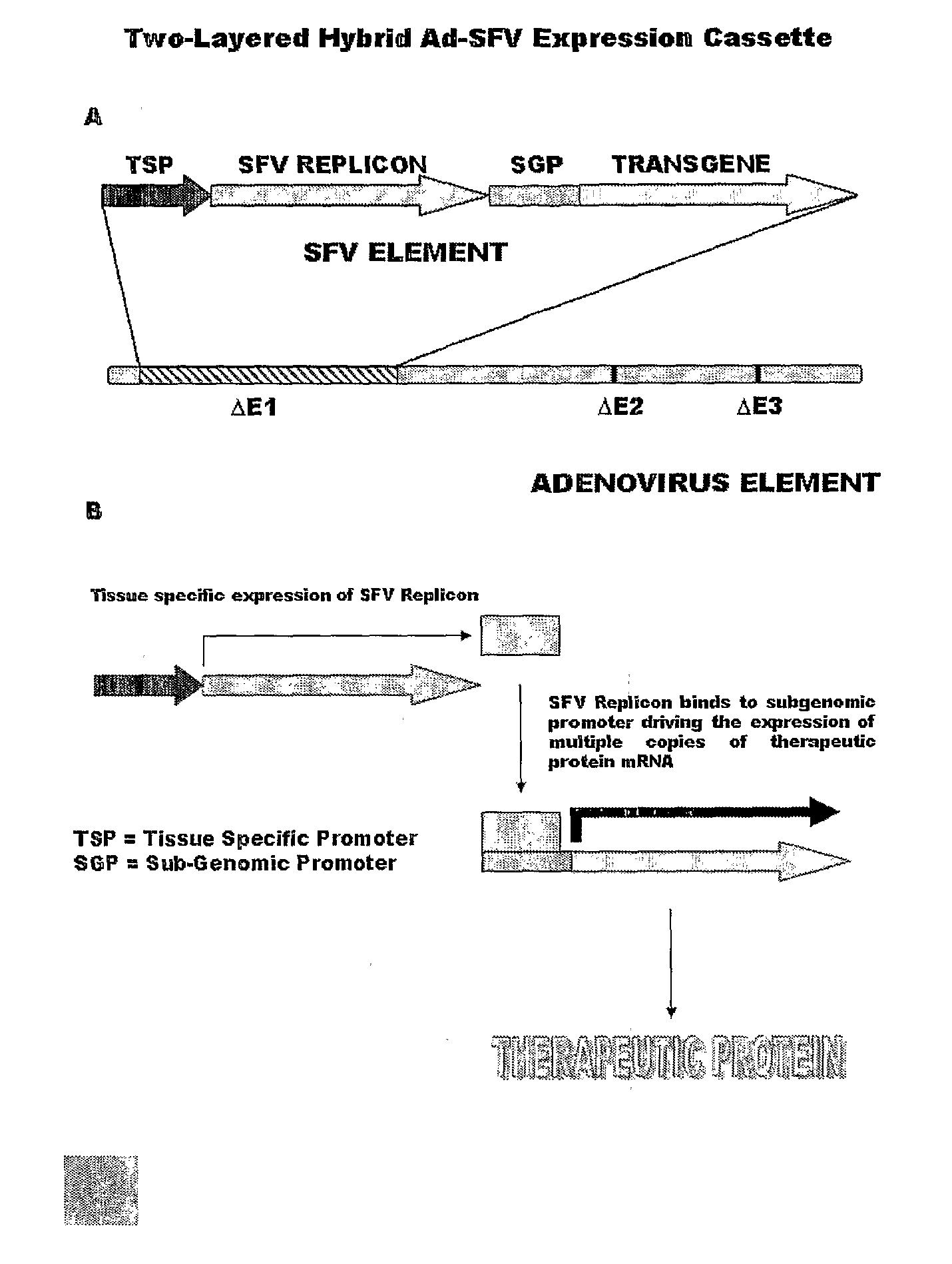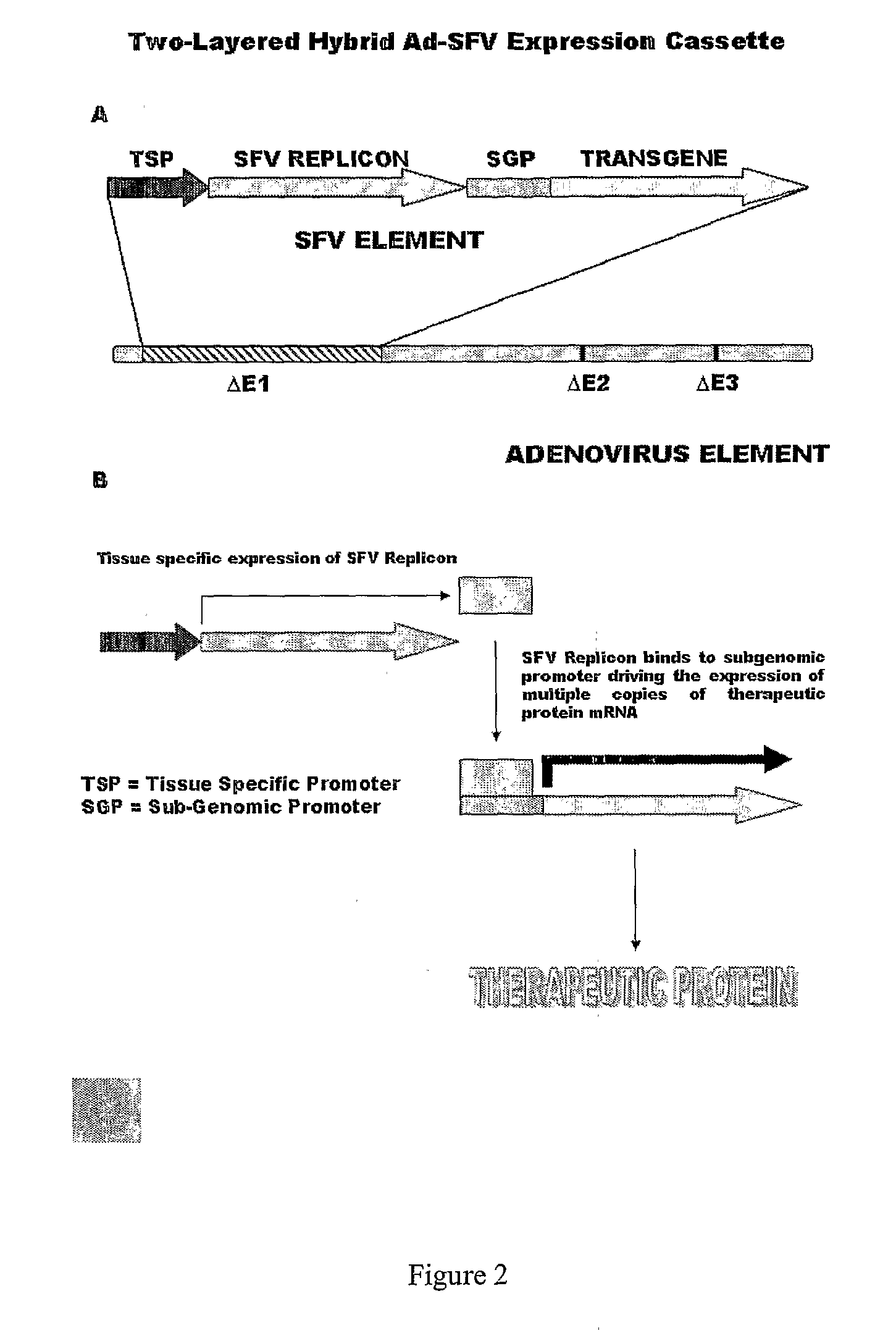Liposomally encapsulated hybrid adenovirus-semliki forest virus (SFV) vectors carrying rnai constructs and therapeutic genes for use against cancer targets and other diseases
- Summary
- Abstract
- Description
- Claims
- Application Information
AI Technical Summary
Benefits of technology
Problems solved by technology
Method used
Image
Examples
examples
[0074]The examples describe the use of a hybrid Adenoviral-SFV vector for delivery of RNA interference constructs against the following targets:[0075]1. Cyclin family of proteins, e.g. cyclin A, B, C, D and E: these are proteins that regulate the cell cycle. Disruption of these functions prevents cell division[0076]2. Essential metabolic enzymes, e.g. ATPases or enzymes involved in glycolysis and the mitochondrial membrane electron transport chain: these enzymes regulate the essential energy metabolism of the cell. Disruption of these functions disrupts cell viability.[0077]3. p53 mutants: specifically knock down p53 mutants and reexpression of wild type p53 will result in apoptosis only in cancer cells.[0078]4. Aberrant signal transduction molecules e.g. activated tyrosine kinases and tyrosine kinase receptors, EGFR, Ras, Raf, c-myc: these are oncoproteins that drive uncontrolled proliferation of the cell. Disruption of these proteins will reduce cell division and promote death of ...
PUM
| Property | Measurement | Unit |
|---|---|---|
| Electrical conductance | aaaaa | aaaaa |
| Pressure | aaaaa | aaaaa |
| Structure | aaaaa | aaaaa |
Abstract
Description
Claims
Application Information
 Login to View More
Login to View More - R&D
- Intellectual Property
- Life Sciences
- Materials
- Tech Scout
- Unparalleled Data Quality
- Higher Quality Content
- 60% Fewer Hallucinations
Browse by: Latest US Patents, China's latest patents, Technical Efficacy Thesaurus, Application Domain, Technology Topic, Popular Technical Reports.
© 2025 PatSnap. All rights reserved.Legal|Privacy policy|Modern Slavery Act Transparency Statement|Sitemap|About US| Contact US: help@patsnap.com



